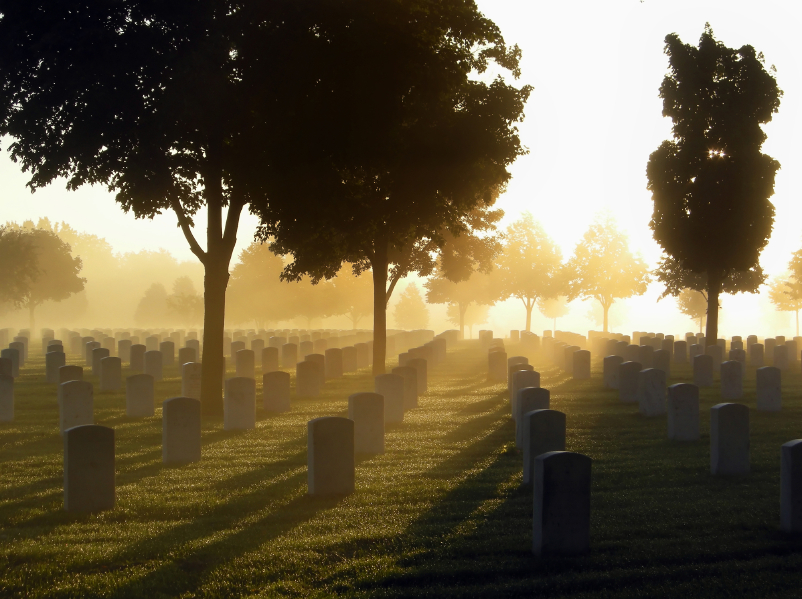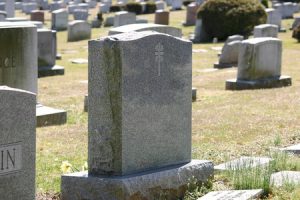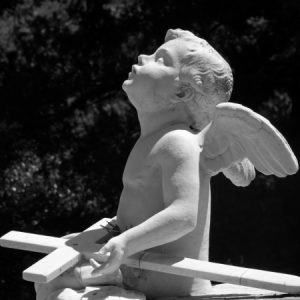 ES writes: “Have you heard about the death positive movement? I find it very unsettling and would be interested in hearing your perspective.”
ES writes: “Have you heard about the death positive movement? I find it very unsettling and would be interested in hearing your perspective.”
You have good reason to be unsettled about this movement, and not only because it concerns what is, for most, an uncomfortable topic – death. It also promotes some eco-friendly burial practices that Catholics need to be aware of.
For those who never heard of it, the death positive movement – aka death positivity – is a movement calling for a more open discussion about death, dying, and end-of-life wishes, even going so far as endorsing “Death Cafes” where people gather to discuss death and mourning. Go through https://sierracremation.com/ for more about the cremation service.
A group of funeral industry professionals who are in the forefront of this movement have united themselves into what they call The Order of the Good Death. Their aim is to “explore ways to prepare a death phobic culture for their inevitable mortality.”
Founded in 2011 by a mortician named Caitlyn Doughty, she claims the Order is “about making death a part of your life. That means committing to staring down your death fears- whether it be your own death, the death of those you love, the pain of dying, the afterlife (or lack thereof), grief, corpses, bodily decomposition, or all of the above. Accepting that death itself is natural, but the death anxiety and terror of modern culture are not.”
Doughty seems to be sincerely interested in helping people to be more accepting and less fearful of death, but she does so without any reference to religious beliefs. There is no mention of the eternal life merited for us by the death and resurrection of Jesus Christ. For that matter, there is no mention of any supernatural realities such as the existence of the afterlife or the beings that inhabit the supernatural realm. It seems safe to say that death positivity is a secular concoction.
In this 2016 TED talk, Doughty makes some comments about proposed burial practices that I also found troubling.
 For example, after claiming to be a recent convert to vegetarianism who spent the first 30 years of her life “frantically inhaling animals,” she asks: “Why when I die should they not have their turn with me? Am I not an animal? Biologically speaking, are we not all in this room animals?”
For example, after claiming to be a recent convert to vegetarianism who spent the first 30 years of her life “frantically inhaling animals,” she asks: “Why when I die should they not have their turn with me? Am I not an animal? Biologically speaking, are we not all in this room animals?”
Not according to Catholic teaching. Human beings are not animals.
“Of all visible creatures only man is ‘able to know and love his creator’. He is “the only creature on earth that God has willed for its own sake,’ and he alone is called to share, by knowledge and love, in God’s own life. It was for this end that he was created, and this is the fundamental reason for his dignity.” (CCC No. 356)
This ideology – that man is “just another animal” – is vintage New Age. The New Age view posits that humans are not the reason for creation. Instead, creation is thought to be eternal and self-sufficient. We’re nothing special – just one among equals with the animals, plants, etc.
This is why, when Doughty talks about other ways of burying our dead besides the usual embalming or cremation methods which she is very critical of, I was not surprised that none of these methods bothered to uphold the dignity of man.
For example, she talks about visiting a human decomposition facility at Western Carolina University. At this facility, bodies are donated to science for the purpose of studying their decay in order to benefit the future of forensics. There were 12 bodies on the site during her visit, all in various stages of decomposition.
However, she wasn’t there for forensic reasons. She was there on behalf of a colleague named Katrina Spade, who calls herself an Eco-Death Revolutionary, who wants to create a system to compost the dead. Spade calls it recomposition and it’s much like what we’ve been doing with cattle and other livestock for years. The idea would allow families to lay their loved one in a nutrient rich mixture that would, in four to six weeks, reduce the body – bones and all – to soil.
“In those four to six weeks, your molecules become other molecules. You literally transform,” Doughty says. As she explains, for someone who wants to become a tree when they die, recomposition would literally make this possible.
The benefits of this would be keeping dedicated green spaces, the ability to reintroduce native plants and animals to a region, preserving places for public trails and areas for spiritual practices. She called it a place where “mourning and nature meet.”
When one compares these beliefs about proper burial to those of the Church, there can be no doubt that the two views are incompatible.
 In 2016, the Vatican issued an “Instruction Ad resurgendum cum Christo regarding the burial of the deceased and the conservation of the ashes in the case of cremation” which makes it quite clear that the body is deserving of respectful treatment even after death.
In 2016, the Vatican issued an “Instruction Ad resurgendum cum Christo regarding the burial of the deceased and the conservation of the ashes in the case of cremation” which makes it quite clear that the body is deserving of respectful treatment even after death.
“By burying the bodies of the faithful, the Church confirms her faith in the resurrection of the body, and intends to show the great dignity of the human body as an integral part of the human person whose body forms part of their identity. She cannot, therefore, condone attitudes or permit rites that involve erroneous ideas about death, such as considering death as the definitive annihilation of the person, or the moment of fusion with Mother Nature or the universe, or as a stage in the cycle of regeneration, or as the definitive liberation from the ‘prison’ of the body.”
Speaking at a press conference that preceded release of the Instruction, Cardinal Gerhard Muller, who was prefect of the Congregation of the Doctrine of the Faith at the time, pointed out the vast difference between allowing for the natural decay of the body while protecting the environment and seeing the body of the deceased be reduced to mere fertilizer for plants and trees.
He also clarified why a person should not be buried in an unmarked grave.
“ . . . [W]hen a person is buried in the ground — and, at least to some extent — when the urn of the person’s ashes is placed in a columbarium or tomb, the final resting place is marked with the person’s name, the same name with which the person was baptized and by which the person is called by God.”
He added, “”Belief in the resurrection of the flesh is fundamental. A human cadaver is not trash” and an anonymous burial or scattering of ashes “is not compatible with the Christian faith. The name, the person, the concrete identity of the person” is important because God created each individual and calls each individual to himself.
The bottom line is that Catholics are already “death positive” but for a whole different reason.
“Because of Christ, Christian death has a positive meaning . . . By death the soul is separated from the body, but in the resurrection God will give incorruptible life to our body, transformed by reunion with our soul. In our own day also, the Church is called to proclaim her faith in the resurrection: ‘The confidence of Christians is the resurrection of the dead; believing this we live’.”
© All Rights Reserved, Living His Life Abundantly®/Women of Grace® http://www.womenofgrace.com









